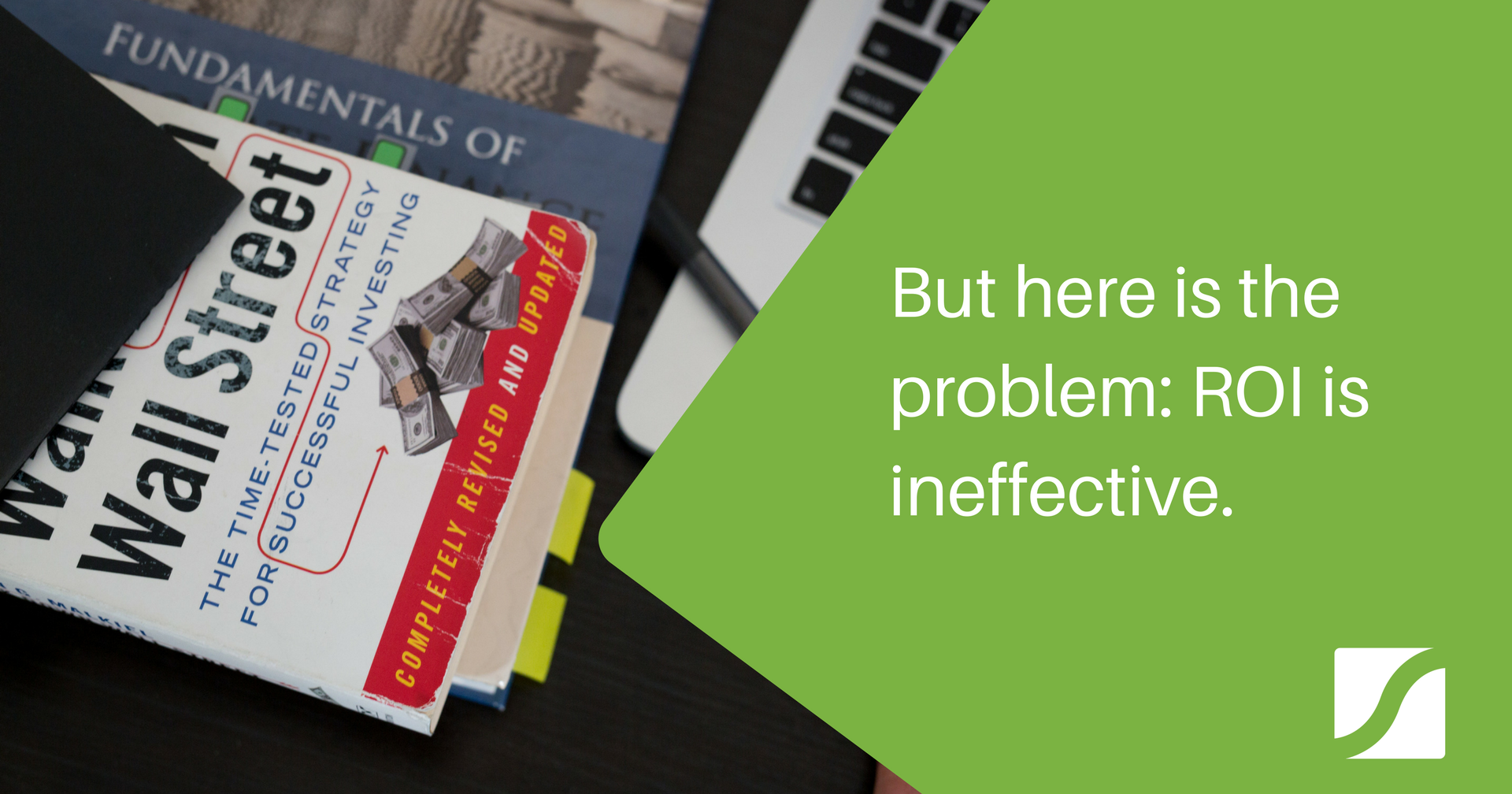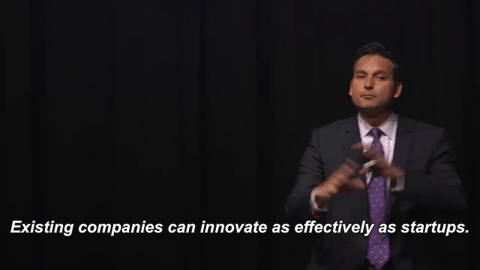The 3 Steps to Value Innovative Opportunities

I can do it in my sleep. Four years at Wharton, two at Columbia Business School, and a few more in investment banking have drilled into me the most broadly used tool that guides corporate decision-making: the financial projection.
Harvard Business Review advises “before anyone writes a check, you need to calculate the return on investment (ROI).”
McKinsey uses it regularly to help companies make smarter marketing spend decisions. In 16,000 business schools throughout the world, students are taught to build financial models and calculate ROI as a core method for deciding which projects to pursue. Every strategy, budgeting effort, and business case I have seen ultimately leads to a discussion of ROI. Investment banks employ armies of analysts to continually build financial models to guide investment decisions and stock prices.
The process is simple. Project benefits (revenue and profit), project costs, and calculate the net present value (NPV) of the results. If the analysis shows a higher ROI for the project than you would get from investing in your core business or in other opportunities, do it.
But here is the problem. ROI is ineffective at assessing the truly innovative, “fourth option” kinds of opportunities that will determine if your business leads or follows in the future. It has rung the death knell of countless opportunities whose payoffs require taking small steps toward potentially dramatic possibilities.
Clayton Christensen argues this approach drives short-term thinking so is killing innovation and our economies. “There is a pernicious methodology for calculating the internal rate of return on an investment. It causes you to focus on smaller and smaller wins. Because if you ever use your money for something that doesn’t pay off for years, the IRR [internal rate of return] is so crummy that people who focus on IRR focus their capital on shorter and shorter term wins.”
A senior strategy executive at a Fortune 500 food products company I spoke to yesterday expressed frustration with their “stick-to-it-ive-ness” because ROI analyses discourage persisting with ideas with longer-term payoffs. A leading apparel client of ours has found it has missed transformative, global opportunities because ROI projections fail to accurately appreciate the long-term potential value of new markets.
The pattern works like this. You have an idea. You run an ROI analysis. The analysis looks unattractive because your payoff is too uncertain or too far off in the future. You adjust your projection to show an early payoff. But when the payoff doesn’t happen quickly, the company pulls back funding. The idea dies … until a smaller, more entrepreneurial company seizes it, succeeds, and proves it works.
So, how can you convince your company to invest in more innovative, “fourth option”-like opportunities?
The answer to this may determine your company’s future.
I recently got to speak to Vivek Mehra, a prolific Silicon Valley venture capitalist, who walked me through how VCs approach investment decisions. He laid out a simple, financial approach that can help you make smarter innovation decisions. If you apply this you will see, and actually be able to calculate, the true potential of early-stage innovation opportunities.
Vivek is a general partner at August Capital, a venture capital firm that invests in innovative technology companies. He has an impressive track record in areas like data center technologies, infrastructure software, SaaS, networking, security, and storage. Before joining August Capital, Vivek cofounded Cobalt Networks in 1996, where, as CTO and VP of product development, he developed the first successful server appliance products culminating in a successful IPO and acquisition by Sun Microsystems for $2B.
I met Vivek at a talk I gave for Silicon Valley public company board members, organized by BDO. He sat down with me to break down a better approach to predicting the pay-off of innovation.
To understand this approach, you must first understand customer lifetime value (CLV). Professor Peter Fader of Wharton has been studying CLV for more than a decade. He gave a talk at our most recent Outthinker CSO Roundtable, where he broke down how CLV works.
Essentially CLV is a statistical method for calculating the value of a customer, based on factors like (a) frequency of purchase, (b) size of purchase, (c) likelihood to refer new customers, and (d) length of time the customer will remain loyal. You can hear Fader explain CLV in this podcast.
Fader has found that you can use CLV to estimate the value of an entire firm. His estimates of what a company is worth, and therefore its stock price, based on the collective CLV of their customer base is more accurate than the calculations of Wall Street analysts. It also shows that Wal-Mart far overpaid for their acquisition of Jet.com for $3b in August 2016.
How Vivek uses CLV to more accurately calculate the potential value of disruptive innovations.
Step 1: Perfect your customer acquisition process
Every new customer costs you something to acquire. You spend money on advertising, pay sales people to visit customers, send them collateral to convince them to buy. All of that costs money.
The first job of a new business is to figure out the most efficient way to acquire new customers. One reason Netflix beat Blockbuster was that it used one hyper-efficient customer-acquisition tactic. In the era in which Netflix was still shipping physical DVDs, it placed a coupon for one month of free service in the boxes of new DVD players. Every person who saw the offer had a new DVD player and was likely looking for new DVDs. As a result, their uptake on that offer was high. Their acquisition cost was low.
Blockbuster, by comparison, advertised their new Netflix copycat service everywhere – print, radio, billboards. Their acquisition cost was significantly higher.
By experimenting with customer acquisition tactics, dropping high-cost approaches and finding new lower-cost ones, you optimize your approach. Vivek knows a company has figured out their customer acquisition strategy when they meet their sales targets for 3 to 4 quarters and that success is not driven by one or two high-performing salespeople, but rather 70-80% of the salespeople are meeting their targets.
Step 2: Estimate CLV
Then look at the behavior of customers you have acquired. How much to they spend? How often do they purchase? Do they refer new customers? How long to they remain as customers?
When you compare the value of a new customer to the cost of acquiring the customer, you can calculate their CLV. If you spend $100 to acquire a customer who represents $100, your idea is worth nothing. But if you can acquire that same customer for $10, you have something worthwhile.
Step 3: Calculate market potential
Once you have proven the model works for some customers, and you have a positive CLV, you simply multiply CLV by the potential market. In the example above, each customer is worth $90 (it costs you $10 to acquire a $100 customer). So you multiply $90 by the number of customers that are likely to buy from you if you pursue the idea further.
This approach explains why Amazon.com is so dominant today. Jeff Bezos advised, “Given a 10% chance of a 100 times payoff, you should take that bet every time.” The company didn’t know if its Amazon Echo talking tower would pay off, so it built one to see how customers would respond. Their experimentation helped them optimize customer acquisition cost and estimate CLV. At first, competitors mocked the idea. Customer acquisition costs dropped as customers came to love it, sharing their fanaticism with friends. CLV grew as customers found new ways to use it to access Amazon.com services (e.g., Amazon’s music streaming service) and purchase products (“Add Tide detergent to my shopping cart.”)
Bezos recently told investors, “We want to be a large company that’s also an invention machine,” and this approach to valuing innovations has the potential to overcome the ROI approach that kills off new ideas inside most large companies.
So the next time you are about to open up a spreadsheet and run a projection, consider whether you are pursuing the right approach. If your idea is innovative, if potential is uncertain, if no one has done this before, consider a different approach. Put something out there that will enable you to:
- Optimize customer acquisition
- Estimate CLV
- Calculate market potential



